#arboreal salamander
Text

Robust Climbing Salamander (Bolitoglossa robusta), family Plethodontidae, Tapanti National Park, Costa Rica
Photograph by Piotr Naskrecki
#climbing salamander#arboreal salamander#salamander#bolitoglossa#bolitoglossine#plethodontidae#amphibian#herpetology#animals#nature#central america
9K notes
·
View notes
Text


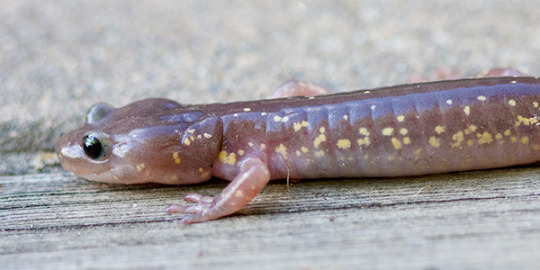

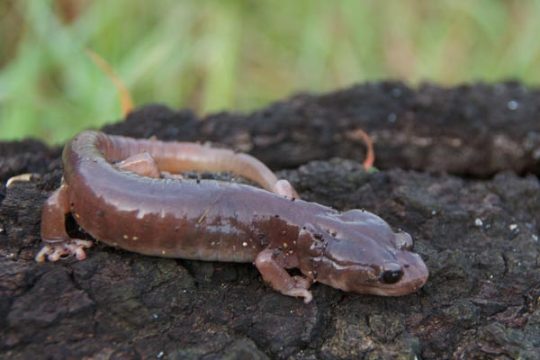




Aneides lugubris better known as the arboreal salamander is a species of climbing salamander native to the US state of California and the baja peninsula of mexico. These primarily nocturnal amphibians tend to inhabit thick chapparal shrubland and oak, sycamore, sequoia, and redwood dominated forests. These amphibians spends there days hiding in moist tree hollows, leaf litter, root bundles, rodent burrows, or cracks and holes in rocks, emerging at night to hunt insects and other invertebrates. These moderately social amphibians may share there hidy holes with as many as 10 other salamanders, and communicate with one another by barking. As there name suggests arboreal salamanders are excellent climbers, sporting large feet with strong elongated toes and a prehensile tail. It is known to jump between branches, angeling its limbs and tail to act as parachutes and help it glide. Reaching around 4 to 7 inches (10 to 18cms) in length, the arboreal salamander sports a broad triangular head packed with unusually long and sharp teeth for an amphibian. The coloration is dark brownish purple to gray with yellowish or white spotting that varies between populations and in some cases is absent. The underside is a solid cream color. The breeding season occurs from late spring to early summer, after mating the female lays twelve to twenty-four eggs in a moist hollowed area such as a rotten log or tree hollow, where she will care for them until they hatch some 3 to 4 months later. Under ideal conditions an arboreal salamander may reach sexual maturity at around 2.5 years of age and may live upwards of 10.
#pleistocene pride#pleistocene#pliestocene pride#pliestocene#cenozoic#ice age#stone age#amphibian#salamander#arboreal salamander
3 notes
·
View notes
Text
Animal of the Day!
Arboreal Minute Salamander (Thorius arboreus)

Photo from iNaturalist)
Conservation Status- Critically Endangered
Habitat- Sierra de Juarez Mountains in Mexico
Size (Weight/Length)- 17 mm
Diet- Insects
Cool Facts- The tiny arboreal minute salamander lives in a cloud forest in southern Mexico. Their home is made up of thick layers of moss, short trees, and bromeliads. Due to low clouds, morning fog occurs on a daily basis and results in a wet environment, perfect for these tiny salamanders. They spend the majority of their lives clinging to bromeliads growing on their host trees. The arboreal minute salamander’s toes are specially padded, allowing for easy movement in the treetops. Having an extremely small range that is at constant risk of deforestation, the arboreal minute salamander is reducing rapidly in population.
Rating- 11/10 (Little guy trying his best.)
#animal of the day#animals#amphibian#salamander#thursday#september 21#arboreal minute salamander#biology#science#conservation#the more you know
208 notes
·
View notes
Text
'hey like. You good' I have at least 4 bright pink fan characters with freak sharp teeth (big and small) who can be toyed around to have a *high* prey drive if I'm feeling generous. Yeah man I'm fine this is actually how I'm like every day.
#like theyre all based on predators/things that bite too (velvet worm moray eel ferret and arboreal salamander)#one of said guys is of a species that used to prey on and eat a canon species. another will actually swallow you as a friendly greeting#the other 2 are just me projecting#i could have fun with them. i mean they wouldnt hurt their partners at all but they can tease#copernicium
1 note
·
View note
Note
What is the best toad you have ever seen? (doesnt have to be one you saw irl, just the best toad in your opinion).
Look, there are 647 toad species in 53 genera, and I have seen many of them, some of which are truly glorious. So it is hard for me to say that any one is the best I have ever seen. But to just choose one group for the sake of argument:
I am a huge fan of animals evolving mittens instead of fingers, like what we see in bolitoglossid salamanders and the web-footed sand gecko, Pachydactylus rangei. In toads, the arboreal African genus Nectophryne have done this gloriously. And they're also exceptionally cute for true bufonids.

[src]
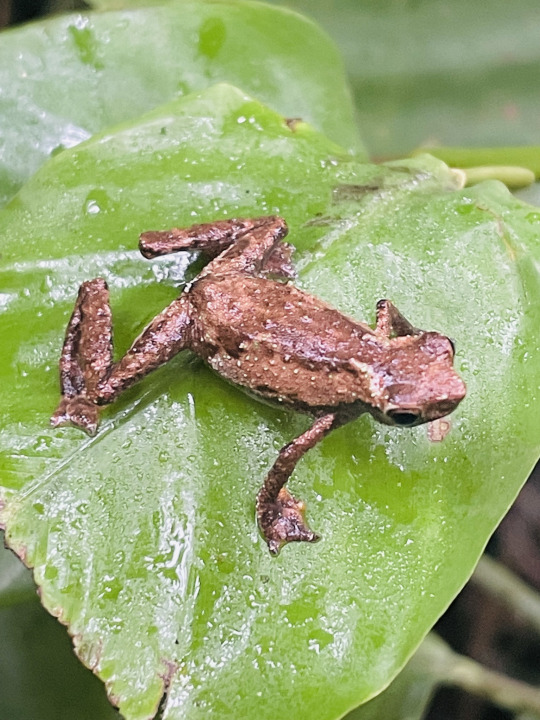
[src]
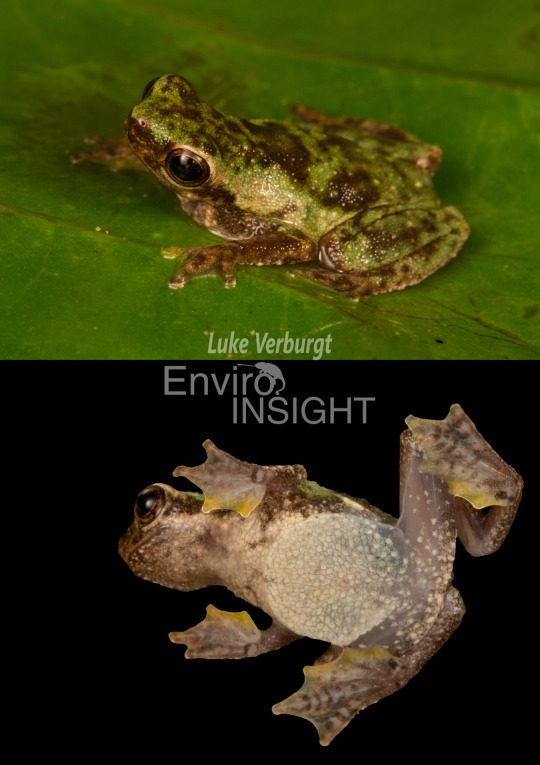
[src]
#toad#toads#animals#frog#frogs#friend-shaped#the internet is really really great (for frogs)#I've got a fast connection so I don't have to wait (for frogs)#there's always some new site (for frogs)#I browse all day and night (for frogs)#it's like I'm browsing at the speed of light (for frogs!)#Nectophryne#Bufonidae#Nectophryne afra#Nectophryne batesii#these things are totally crazy#they're some of the smallest toads in the world#and have a really strong miniaturisation syndrome#and I am a sucker for miniaturised frogs#as you know#these toads have the hands that apple originally designed its hockey puck mouse for
261 notes
·
View notes
Text
Spectember day 17 - evolutionary history of dragons
yet again reusing old art because i am still too tired to draw new stuff
all modern dragons are descended from a hexapodal ancestor; the salamander
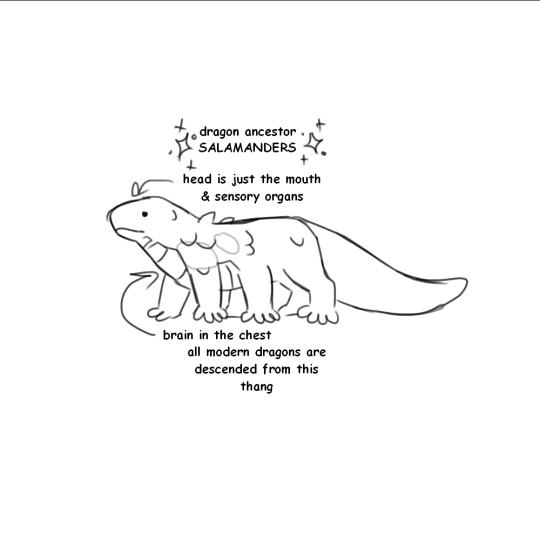
(all further drawings show the nostrils on the head which was a mistake oops. they're not supposed to be on the head but i also haven't decided where they should be yet)
dragons have split into a multitude of clades, and I'm focusing on wyverns (flying dragons) & drakes (bipedal, arboreal dragons), but there are also lindwyrms (long, serpentine dragons), hydras (dragons that have turned a variety of limbs into false heads), and sea serpents (aquatic dragons)
wyverns started out small, gliding from treetop to treetop with a membrane that stretched between their limbs and tail. somewhere along the line, they started evolving powered flight, and the two outer fingers on their middle legs grew to accommodate this

eventually this grew into the fully fledged wings that wyverns have today. sapient wyverns have, on average, a wingspan of about 15ft (4.5m). larger wyverns do exist, but the vast majority of them are smaller than this
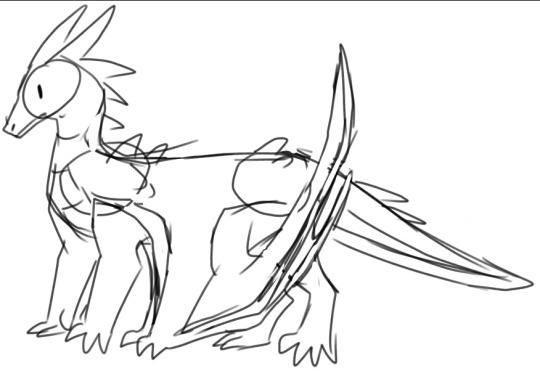
the history of drakes is a lot simpler than wyverns: they learned to climb trees. they're like the monkeys of the dragon world, helped along by thumbs on every foot & a prehensile tail
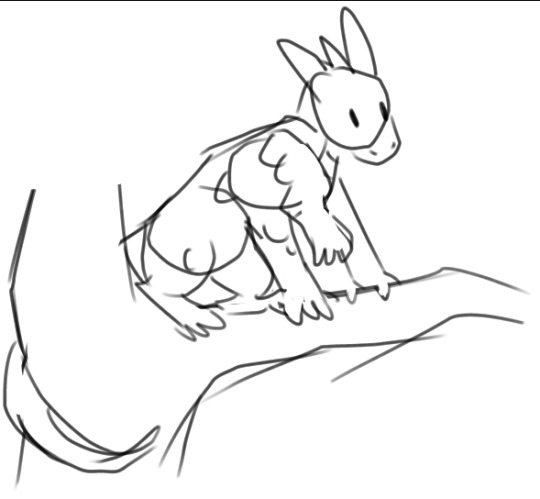
they love to scamper and scurry and scuttle
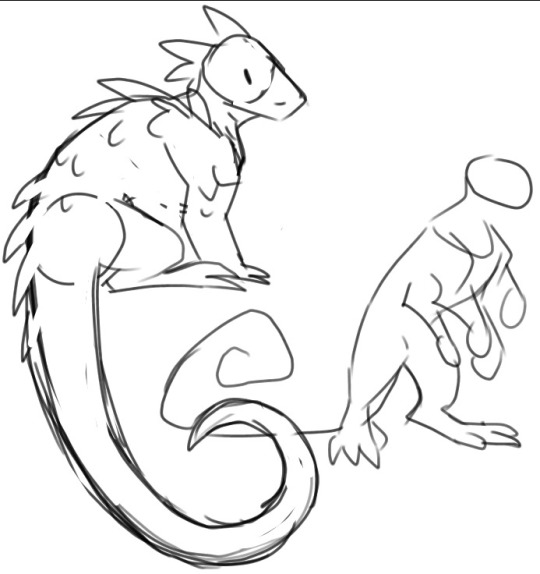
#spec bio#speculative biology#spec evo#speculative evolution#xenobiology#spectember#spectember 2023#world tag: ased
120 notes
·
View notes
Text
The magic of mountains in Mesoamerica.
Active volcanoes covered in thick green coats of misty cloud forest and rainforest. A focal point, an epicenter, the meeting place between two oceans and two continents. The origin of the revered orchid, vanilla!
Here, an absurd amount of endemic species with very small limited distribution ranges in Central America and Mesoamerica. Out of about 700 species of reptiles living in Mesoamerica, over 200 live nowhere else. Out of about 550 species of amphibians living in Mesoamerica, over 350 live nowhere else.
And this extreme biodiversity is boosted by the presence of so many mountain ranges located within the tropics, so that “cooler” habitats (at high elevations) can exist closer to the heat of the equator. And orographic uplift (rain in the mountains) means that humid and wetter habitats (”sky islands”) can exist closer to dryland habitats (arid valleys). And also different habitats can occur so close next to each other along the slopes of a single mountain (”altitudinal zonation”). And this is in addition to how the region is the meeting place between ecosystems of South America and North America, and between the Caribbean Sea and the Pacific Ocean.
So that there can be about 30 species of hummingbirds that only live in Mexico and Central America.
Or there can be like 11 different species of venomous palm pit vipers all in the same genus living in just a couple of mountain ranges between merely San Jose and Ciudad de Guatemala.
Or how, within the borders of Guatemala alone there are at least 40 different species of salamanders, and most of them are so-called arboreal “climbing salamanders” which live in bromeliads and fern mats growing in the branches of trees.
Like how the mangrove hummingbird only lives in brackish swamps of the mangrove forests along the seashore of a stretch of coastline only within the borders of Costa Rica, and the hummingbird depends on the nectar from the flower of one species of tea mangrove (Pelliciera rhizophorae).
Consider the Motagua beaded lizard (Heloderma charlesbogerti), a species of venomous lizard in the same genus as and closely related to the beloved Gila monster. It’s an endemic species, living only in one valley, and there are less than 200 Motagua beaded lizards surviving in the wild. It’s “one of the rarest and most endangered lizards on the planet.” And for food, it relies on the eggs of the Motagua spiny-tailed iguana (Ctenosaura palearis), of which there are less than 2,500 surviving in the wild, making it another of the planet’s most endangered lizards. Two lizards, found nowhere else, entwined in a relationship, almost extinct. But it gets more incredible. For food, the Motagua spiny-tailed iguana itself relies on the fruit of several cactus species. (One of the dryland plants that the iguana relies on is Pereskia lychnidiflora, one of the only cactus-type plants that basically produces leaves.) Without the cactus fruit, the Motagua spiny-tailed iguana would disappear. Without the Motagua spiny-tailed iguana’s eggs, the venomous Motagua beaded lizard would disappear.
Think of frogs like Bromeliohyla bromeliacia. There are colorful poisonous tree frogs whose aquatic baby tadpoles swim around in the tiny pools of rain water that temporarily collect in flowers growing on tree branches and in forest canopies. A whole multiplicity of “small” worlds existing, some ephemerally and some more permanently. Whole unique ecosystems in the treetops.
Here, the Pacific Ocean and the Atlantic Ocean nearly kiss. They are separated by less than 70 kilometers of land! You could stand on the peak of a Central American volcano, drinking native cocoa flavored with vanilla, and nearly toss a stone between these two marine universes.
Amphibians, reptiles, and hummingbirds in Mesoamerica were just like: “Let’s find a mist-shrouded cloud forest near the slopes of an active volcano in a single mountain range and only live in an area under 5 square kilometeres in size and only between the elevations of 1450 and 1650 meters.” (This is the famous recently-extinct golden toad of the Monteverde cloud forest and the slopes of the Arenal volcano.) Then these creatures were like: “Also I’m probably extravagantly colored with neon blue or fiery orange or bright pink or something.”
“And I’ll live nowhere else on the planet.”
192 notes
·
View notes
Text
We've noticed a gap in language for specifically referring to animals in systems that function like/mostly like normal animals. so I'm coining this term. I have been using it for awhile now in therapy and when talking to other we know systems.
Beastie (plural Beasties)
Refers to animal alters/headmates in systems/collectives that cognitively function in a way different than that of the non-animal altars/headmates in the system/collective.
Beasties do NOT need to be known animal. They can be anything that would be clearly identified as an animal (e.g mythical beasts, fictional hybrids, speculative animals, elemental animals, and the like)
Not all animals in systems/collectives are beasties due to the fact that the term refers to a animalistic way of functioning. Whether or not the term applies to a certain alter/headmate is intentionally somewhat vague, and and is dependent upon the context of the other alters/headmates in the system/collective.
Differs from the term non-human alter/headmate in that not all non-human alters/heamates are animals, and a lot of non-human alters/headmates function cognitively similarly to their human counterparts.
I am part of a OSDD-1"B" system, and consider myself "Endo complex", I don't care what type of system/plurals use this term. As I'm coining it to fill a gap in language.
HOWEVER I would like this term to be exclusive to systems/plurals, and exclusively to refer to alters/headmates that are literally animals. So it is not to be used in contexts of pet regression, animal-hearted, otherkin/therianthropes, petplay, etc. That is just not what the term is meant to be used for.
And here's a flag just for fun


with and without symbol. symbol used here. If anyone is willing to design a unique symbol specifically for this flag I would greatly appreciate it.
Navy Blue is for aquatic beasties such as fish, sharks, aquatic mammal, aquatic invertebrate, etc.
Deep Sea Green is for amphibious and semiaquatic beasties such as frogs, salamanders, newts, caecilian, river otters, crocodilians, penguins, etc.
Forest Green is for terrestrial and arboreal beasties such as most mammals, birds, reptiles, and many arthropods.
Olive Green is for herbivorous beasties such as horses, toucans, sloths, deer, tortoises, hummingbirds, aphids, bees, and many more.
Beige is for omnivorous beasties such crows, hogs, bears, canines, some lizards, chickens, many Testudines, and many more.
Brass is for carnivorous and insectivorous beasties such as felids, birds of prey, snakes, crocodilians, spiders, sharks, most bats, some lizards, and many more.
Brick Red is for beasties that are animals that can exist in the outerworld, like the animals mentioned above. This stripe is also for beasties that are Introjects or factives of real animals.
Purple Red is for hybrid beasties which could be something possible in the outerworld like ligers, or something impossible like griffins. This stripe is also for beasties that are Introjects or faitives/fucktives of animals.
Deep Violet is for beasties that are mythical creatures such as dragons, unicorns, phoenixes, cryptids, and more. This stripe is also for beasties that are Introjects or fictives of fictional animals.
#-v#Beastie#Beasties#system terms#coining#plural term#system coining#plural coining#flags#my flags#non human alter#animal alter#endo neutral#plural system#osdd system#traumagenic system#did alter#did system#dissociative system#osdd alter#our flags
16 notes
·
View notes
Text

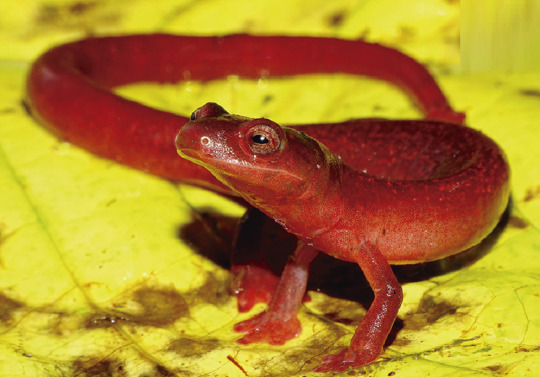
Chiriquí Fire Salamander (Bolitoglossa cathyledecae), family Plethodontidae, endemic to the Chiriquí Province of Panama
First described in 2022.
photograph by Mike Ponce
#salamander#mushroomtongue salamander#arboreal salamander#climbing salamander#bolitoglossa#bolitoglossine#plethodontidae#amphibian#herpetology#central america#animals#nature
893 notes
·
View notes
Text




@amphibianaday more amphibuary prompts, because the creatures call me to keep drawing more
Day 3- I didn't want to try and do this prompt with my bad hand, considering my dip pen lineart is messy enough as is; so I opted to indulge the hyperfixation and draw the lovely blorbo that is Michael (for he is notorious for having some awfully odd hands) with a froggy little friend. I know the focus isn't the frog but I was tired (it was midnight) and frogs are hard to draw
Days 4/5- Caecilian ramen. Need I say more.
Day 6- Rainbow salamander, because Arboreal Salamanders don't come in rainbow and therefore my dreams of a rainbow Beast with bigass boba eyes shall stay imaginary
#still just working through the backlog of earlier prompts but just picking and choosing wasnt working so ye#im almost caught up tho#birdie's art#birdie with a pencil#amphibians#amphibuary#amphibuary2023#salamander#caecilian#watercolour#traditional art#art#tma michael
58 notes
·
View notes
Photo
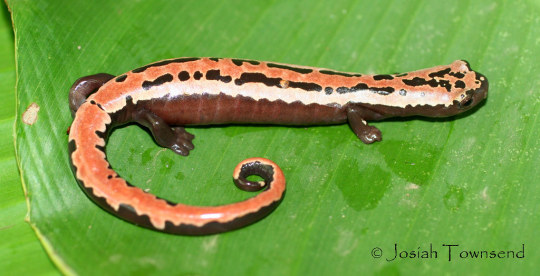
Bolitoglossa mexicana, Rio Negro Honduras
Bolitoglossine salamanders are usually arboreal salamanders, which are often found on leaves and tree trunks after rains. They are also sometime found in epiphytic bromeliads, ferns, and other plants.
Bolitoglossines are in the family Plethodontidae, the lungless salamanders. They respirate through the skin and the lining of their mouths. This genus is also referred to as the “mushroom tongued salamanders”. They use that distinctive tongue, by shooting it out, almost chameleon style, to grab small invertebrate prey, and pull it back into their mouths.
These salamanders have 2 distinct foot types that help them climb trees and other plants: 1. heavily webbed (like the salamander pictured above) or 2. long thin toes. They are also capable of tail autonomy and regrowth.
This genus (Bolitoglossa) is found only in the American tropics, concentrated mostly in Central America. 1/5 of all salamander species are in this genus, making Central America a major diversity hotspot for salamanders (behind only the Appalachian Mountain region and Pacific Northwest of North America).
This is absolutely one of my favorite groups of animals!
photograph by Josiah Townsend | Flickr CC
#bolitoglossa#salamander#plethodontidae#amphibian#central america#south america#mexico#animals#nature#science#herpetology
76 notes
·
View notes
Text
Pokemon Mystery Dungeon Team Ideas
(That can be used In-Game)
Red & Blue Rescue Team 🔴
Explorers of Sky 🟢
Gates to Infinity 🔵
Super Mystery Dungeon 🟡
Mystery Dungeon DX 🟣
Psyduck x Torchic (Bird Theme) 🔴🟣
Piplup x Torchic (Bird Theme) 🟢🟡
Charmander x Treecko (Lizard Theme) 🔴🟢🟡🟣
Charmander x Squirtle/Totodile x Treecko (Reptile Theme) 🔴🟢🟡🟣
Snivy x Axew (Reptile Theme) 🔵
Bulbasaur x Mudkip (Amphibian Theme) 🔴🟢🟡🟣
Bulbasaur x Froakie (Frog Theme) 🟡
Charmander x Mudkip (Salamander Theme) 🔴🟢🟡🟣
Squirtle x Turtwig (Turtle Theme) 🟢🟡
Totodile x Chikorita/Treecko (Dinosaur Theme) 🔴🟢🟡🟣
Pikachu x Chespin (Rodent Theme) 🟡
Eevee x Vulpix (Fox Theme) 🟢
Shinx x Meowth/Skitty/Eevee* (Cat Theme) 🟢
Riolu x Vulpix (Dog Theme) 🟢
Riolu x Fennekin (Dog Theme) 🟡
Machop x Torchic (Fighting Theme) 🔴🟣
Riolu x Torchic/Chimchar (Fighting Theme) 🟢🟡
Riolu x Torchic/Chimchar/Tepig x Chespin (Fighting Theme) 🟡
Mudkip x Turtwig (Ground Theme) 🟢🟡
Mudkip/Turtwig x Phanpy (Ground Theme) 🟢
Piplup x Riolu (Steel Theme) 🟢🟡
Eevee x Pikachu (Let’s Go Theme) 🔴🟢🟣
Psyduck x Cubone (Lonely Theme) 🟣
Treecko x Chimchar (Arboreal Theme) 🟢🟡
Totodile x Chimchar (Godzilla x Kong Theme) 🟢🟡
Skitty x Cyndaquil (Two Best Friends Who Can’t Fucking See) 🔴🟢🟣
*Eevee not recommended as partner due to Runaway ability (partner will run from a fight if health gets too low).
#pokemon#mystery dungeon#red rescue team#blue rescue team#explorers of sky#gates to infinity#super mystery dungeon#rescue team dx
5 notes
·
View notes
Text
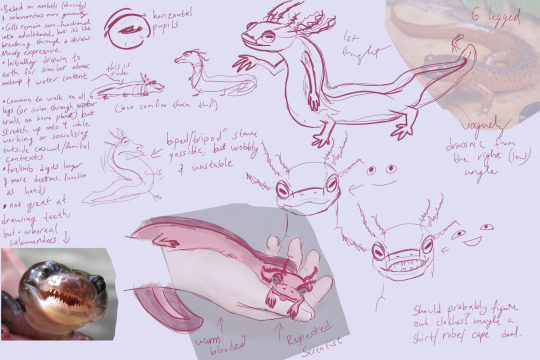
axomander aliens scribbles? 🤔 I haven't done aliens in soooo long unless I'm doing rubber forehead style aliens. Nakey bc I haven’t thought about clothes yet, but they would mostly dress for temperature or moisture regulation, not modesty
Typed up the side notes under the cut bc i think my handwriting is bad
Based on axolotls (obviously) and salamanders more generally
Gills remain semi functional into adulthood, but its like breathing through a straw. Mostly expressive
Initially drawn to earth for similar atmos. makeup and water content
Common to walk on all 6 legs (or swim through water trails, on home planet) but stretch up onto 4 while working or socializing outside casual/familial contexts
Forelimbs longer & more dexterous, function as hands
Not great at drawing teeth, but - arboreal salamanders
#not sure i want to tag this its messy!#but ive been thinking about it all day hhh#a sketchy tag#rtl#scale isnt definite yet#just that theyre oversized mostly-terrestrial axolotls
7 notes
·
View notes
Text
mutual tag game! got tagged by @clamcastle thanks 🧚♀️
fav animal: weevils, toads, gippsland giant earthworm, arboreal salamander, turkey vulture, small weird mammals
fav bug: see above
fav flower: snowdrops, lily of the valley, crocuses
fav drink: so very many, top favourite rn is ivan chai
star sign: taurus
1 song on repeat lately:
youtube
current or last tv show: not a big tv watcher, so i don't remember
last movie watched: noroi, a japanese horror movie. very good, i recommend it
tagging @isawken @warlock119 @2spirit @whitemoths
5 notes
·
View notes
Text
Centaur time
On Aran centaurs use the moons to keep track of time. Manini/Kon, the smaller male moon, is used to measure the months. Metzi/Nurt, the larger female moon, is used to mark the passage of seasons.
A centaur week contains ten (10) days. A month contains thirty (30) days. A year contains sixteen (16) months or four hundred and eighty (480) days.
Days of the week:
Monfaday- Moon Father Day- the start of the week. Kon/Manini arrives first.
Monmaday- Moon Mother Day- the second day of the week. Nurt/Metzi moves slowly and arrives second.
Rahday- Rah’s Day- the third day of the week. Nurt/Metzi creates the twin Sun and Aran, the sun is made first. Rah is the name of the sun god of the halflings.
Aranday- Aran’s Day. fourth day of the week. Nurt/Metzi creates the twin Sun and Aran, Aran the world is born second.
Astrday- Stars’ Day. The fifth day of the week. Kon/Manini creates all the stars in the sky.
Seaday- Seas’ Day. The sixth day of the week. Nurt/Metzi creates the seas and oceans.
Brookday- Brooks’ Day. The seventh day of the week. Kon/Manini creates the brooks, streams, rivers, ponds, and lakes.
Arbrday- Arbors’ Day. The eighth day of the week. Nurt/Metzi creates trees and bushes.
Grassday- Grasses’ Day. The ninth day of the week. Kon/Manini creates the grasses, mosses, and flowers.
Beastday- Beasts’ Day. The tenth day of the week. Nurt/Metzi and Kon/Manini challenge each other in creating the animals.
Months of the year:
(Winter) Dawn Moon- First month of the year. When days start to increase after the Solstice. The first week of this month is dedicated to the New Year festival. Start of breeding season for centaurs.
(Winter) Silk Moon- Tools are readied for the upcoming spring. Certain crops are planted. End of breeding season for centaurs. Last week of the month is for shearing salamanders and sheep.
(Spring) Bud Moon- The majority of planting is done this month. Start of cattle breeding.
(Spring) Knucker Moon- Rain storms tend to be frequent starting this month. Male knuckers start roaming in search of mates.
(Spring) Creeping Moon- Post-Estrus foals are born this month. Insects are prominent.
(Spring) Flower Moon- Brightly colored flowers are prominent. Edible flowers are harvested. Nectar to turn into sugar is harvested.
(Summer) Firedrake Moon- Midday siestas start this month.
(Summer) Indombe Moon- Second hottest month of the year.
(Summer) Rah’s Moon- Hottest month of the year. Post-estrus foals named are in this month.
(Summer) Green Moon- Temperatures start cooling again bringing more rain. Plants are vibrant and in full growth.
(Fall) Milk Moon- Start of the harvest season. Centaurs start foaling. Cattle eggs start hatching so cows start giving milk.
(Fall) Reaper Moon- Grains are harvested. Best time for hunting large herbivores. Post-estrus mating can occur this month.
(Fall) Honey Moon- Best month for honey hunting as bees are less active and hives are full from spring and fall foraging.
(Fall) Cheese Moon- End of milking season for cattle. Leftover milk is preserved as cheese.
(Winter) Spoken Moon- Centaur foals born earlier in the year get their names. Centaur herds hunker down for the winter, many tell stories by the fire.
(Winter) Dusk Moon- Last month of the year. The darkest part of the year.
3 notes
·
View notes
Text
Spectember day 16 - sapient dragons
lazy day 16 because I didn't sleep much (entirely my own fault) and don't have it in me to make new drawings
(both images here were drawn in late august & are a bit janky bc i did it quickly but it's good enough for now)
the dragon planet is inhabited by animals superficially resembling dragons from our own mythology
all dragons are descended from a common ancestor, the salamander, and two different species of dragon from two different lineages evolved sapience at more or less the same time
the two sapient dragons are wyverns; a flying species of dragon that has turned their middle pair of limbs into wings. they can also use their front limbs as arms, while the wings & back legs handle all the walking
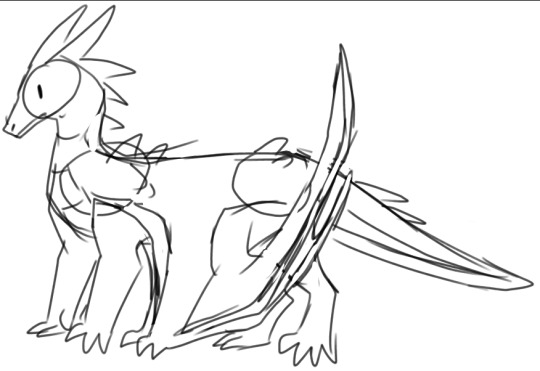
and drakes; an arboreal species with 1 pair of legs and 2 pairs of arms
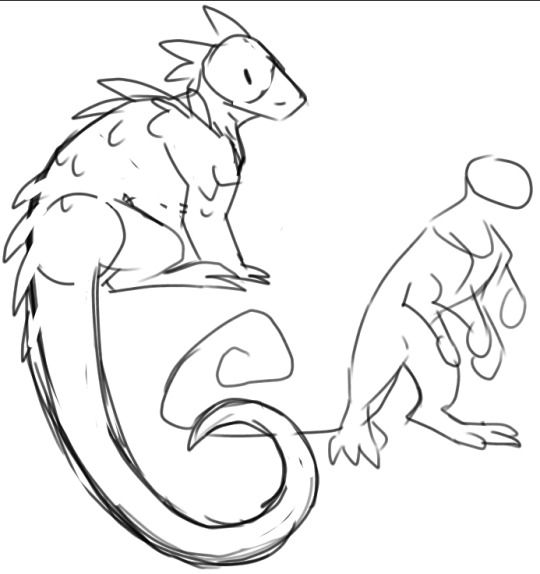
all salamander descendants, including wyverns & drakes, have 6 limbs, and their brain is safely tucked away inside their ribcage. the head is just the mouth and sensory organs. the nostrils are on the body somewhere too i'm just too lazy to move them off of the head
#spec bio#speculative biology#spec evo#speculative evolution#xenobiology#spectember#spectember 2023#world tag: ased#didn't realize until now how many of the sophonts can switch between biped-quad#the gliderbirds.. drakes.... and the next sophont..... sensing a reoccurring theme here#wyverns are on thin ice as hexapod/centaurs. and hexadogs too kinda. but that's their middle legs and idk if that counts as a centaur?#leviathans are the only ones restricted to standing on all their legs all the time#i'll make more armless sophonts later. give the leviathans some thumbless friends#i have a few vague ideas floating around in my head but not enough to do anything with quite yet
47 notes
·
View notes